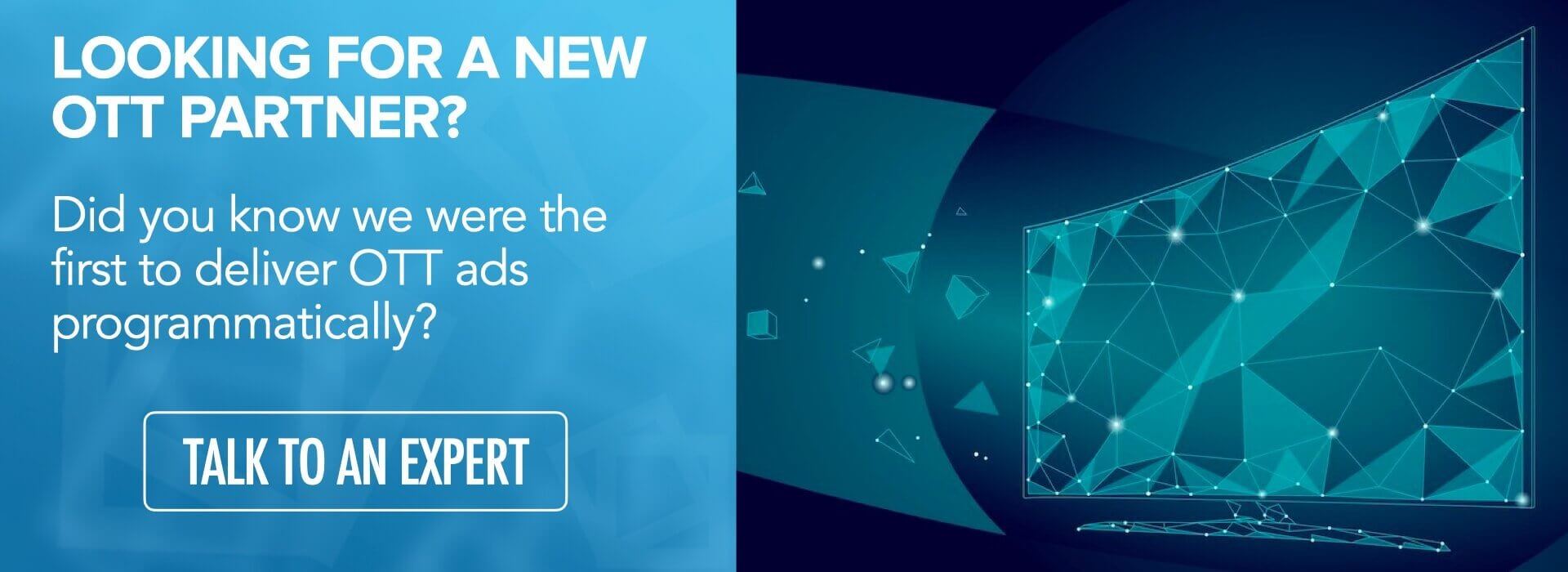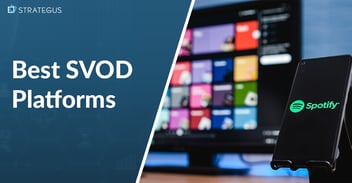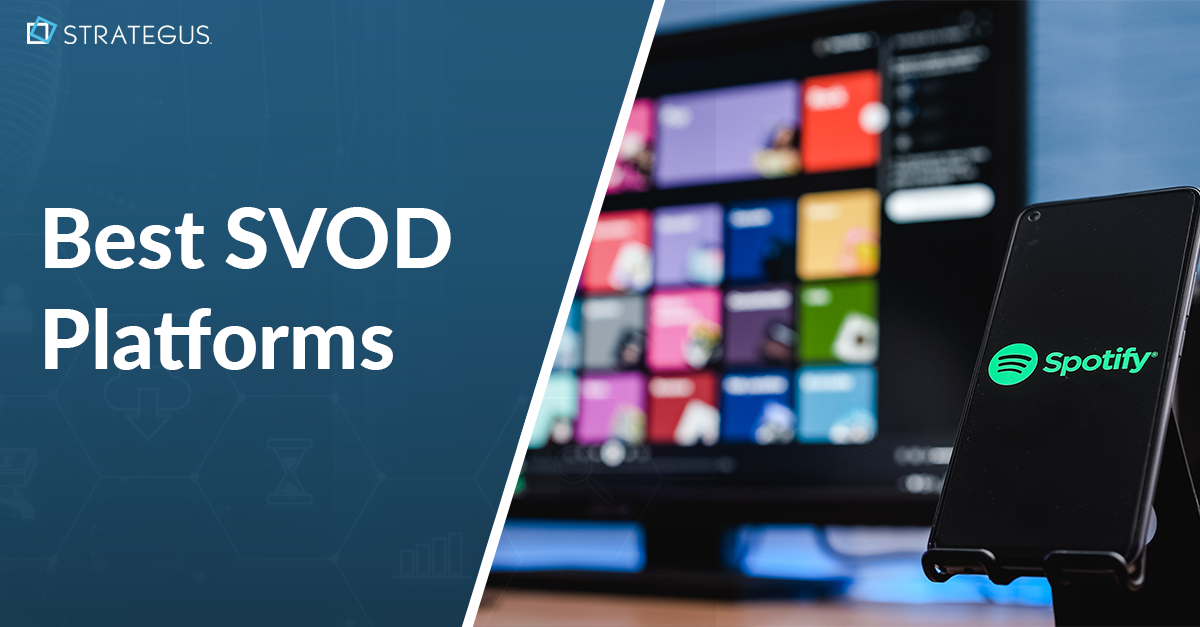- Home
- Strategus Blog
- What Is Omnichannel Marketing — and Why Is There So Much Disagreement?
What Is Omnichannel Marketing — and Why Is There So Much Disagreement?
 Andy Dixon
Andy Dixon
5 minutes read

This is part of “The Comprehensive Guide to Understanding Omnichannel Marketing,” click here to learn more
What is omnichannel marketing? When it comes to advertising campaigns, your ability to properly target the correct audience can be the difference between success and failure. Finding the right channels to tap into that group of people is one of the biggest mountains to climb for lead generation and bringing paying customers.
To find them, getting content out to as many channels as possible is essential. This is where omnichannel marketing comes into play. If you’re unfamiliar with the term, you’re not alone. Read on to learn more about omnichannel marketing and how Strategus is establishing itself as a pioneer in the intersection of omnichannel marketing and OTT.

Omnichannel Marketing and the Lack of Standardization
A quick search for omnichannel marketing will turn up dozens of close-but-not-identical definitions of the phrase. Though most definitions revolve around integrating the use of multiple channels to improve a customer’s experience, there is still disagreement on what those channels are and what they are used for.
The reason behind the disagreement is more straightforward than you might realize — there has never been a standardized definition made concrete by the Interactive Advertising Bureau. Because of this, different iterations of the term are used in different contexts.
Here at Strategus, we look at omnichannel marketing through a programmatic advertising lens, delivering ads across the various devices that a buyer uses on an everyday basis. This creates a consistent experience for the buyer throughout their touchpoints with your company.
Omnichannel marketing is sometimes confused with multi-channel marketing, even if the two are very different. Multi-channel gives customers a choice on which native channel they prefer to shop. Omnichannel ties all of those channels together into a unification process.
In essence, omnichannel marketing unifies all marketing and sales efforts so your customers see the same message across each channel.
Our Encore Omnichannel technology does this by focusing on digital display targeting and online video after a user is exposed to a CTV video ad. These two aspects bring an innovative view of omnichannel marketing as a way to stand apart from the typical understanding of the concept. Think of it also as a reimagining of retargeting.
Placing the Customer as the Center of Importance
Looking back at the history of omnichannel marketing, you can see it has not been around all that long. It essentially started in 2010 when it became a buzzword in the business community thanks to increasing transaction results.
Not until HuffPost wrote a piece about it in 2013 did it take off into a mainstream effort. At its core, it places the customer at the center of all marketing efforts rather than your products.
For many companies, this was hard to grasp at first before realizing the importance of keeping a brand message consistent across multiple channels. This consistency builds trust with the buyer and helps lead to more conversions.
How Omnichannel Marketing Works
An omnichannel marketing campaign that uses our Encore Omnichannel begins with the biggest screen in the buyer’s home — the connected TV. After the target views the CTV ad to completion, our technology delivers programmatic ads to the specific devices that they use daily: smartphones, laptops, tablets, and more.
At this point, you put yourself in front of the buyer via multiple channels, allowing you to send brand messages to stay consistent across the digital spectrum. This consistent exposure from one touchpoint to another is what omnichannel marketing is all about.
As Neil Patel points out, it allows you to work your channels synergistically. Some other points need to be made on why you’d fall behind if you don’t implement some sort of omnichannel program.
Why Omnichannel Marketing Is Crucial for Modern-Day Marketing Campaigns
One good reason to implement this form of marketing now is that integrated channels help you better understand the motivation of your customers. With all those channels integrated and providing data on how customers interact within those spaces, you can better prepare your marketing efforts going forward.
In the realm of OTT/CTV advertising, Strategus is pioneering the way advertisers use omnichannel efforts. Thanks to research proving more people have smartphones in their hands while watching TV, using OTT/CTV videos is one of the smartest things you can do. How can you make it work effectively, though?
Read more on SWOT analysis for smart advertising strategies
A Great Alternative to TV Advertising
You may already know how expensive TV ad rates still are if you ever went this route before. OTT/CTV advertising is a better way to kick off your omnichannel marketing cycle by precisely targeting only your ideal customers while they’re streaming on their TV, and then following up on their smartphones at home.
To effectively implement an omnichannel marketing campaign using OTT/CTV advertising, it’s crucial to have the right technology in place to make previously unclickable ads clickable. This is what Encore Omnichannel does through its strategic retargeting.
Here at Strategus, we developed Encore Omnichannel to help solve a problem early CTV/OTT advertisers are all too familiar with — the inability to track results. This technology turns previously unclickable ads into clickable, and therefore trackable, ones through strategic retargeting. In turn, you can use these clear metrics to direct further campaigns.
Should this sound unique to you, it is. Strategus was the first company to create and utilize this technology. It gives you a unique opportunity to take omnichannel marketing to the next level using ads that are attributable and actionable.
Contact us to learn more about how Encore works and to take your targeted marketing approach to a place you have yet to solve.


Andy Dixon is a seasoned Content Writing Specialist at Strategus, renowned for his expertise in creating engaging and impactful digital content. With over a decade of experience in content creation, Andy has honed his skills in a variety of niches, ranging from technology and marketing to education.
Strategus is a managed services connected TV(CTV) advertising agency with over 60,000+ campaigns delivered. Find out how our experts can extend your team and drive the result that matter most.
Talk to an Expert
Seeking a Custom CTV Strategy That Delivers?
What to read next

Best SVOD Platforms for Advertisers
The streaming wars have a new battlefront, and this time, it's all about your ad budget. Just a few years ago, SVOD meant "no commercials." Now, it...
12 minutes read

Third-Party Data Targeting for CTV: Benefits & Tactics
Third-party data. It’s a term that’s thrown around, and yet few take the time to detail its pros and cons — much less strategies for using...
7 minutes read

First-Party Data Targeting: Benefits and Tactics for CTV Advertising
First-party data is the information that companies collect directly from their customers rather than through intermediaries. Advertisers use this...
10 minutes read

Foot-Traffic Attribution: Tying Ad Impressions to In-Store Visits
The marketing funnel has changed. Today’s shoppers often begin researching products from the comfort of their homes and don’t set foot into a store...
8 minutes read















